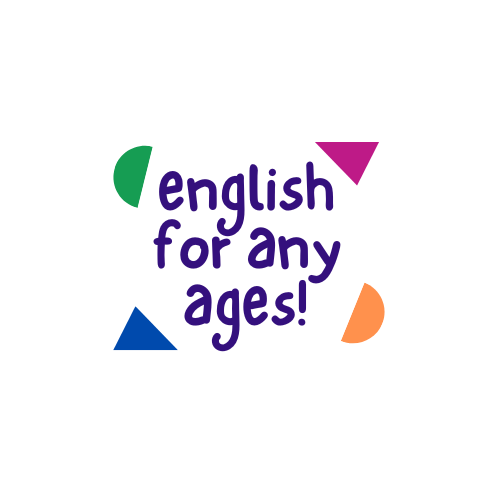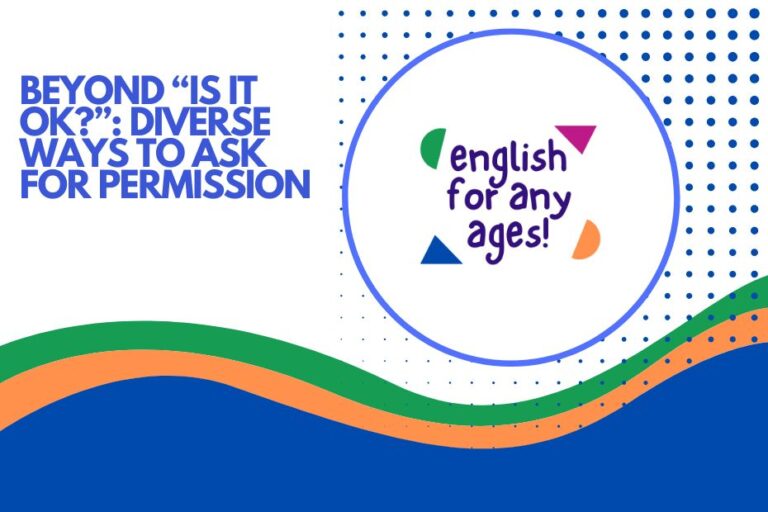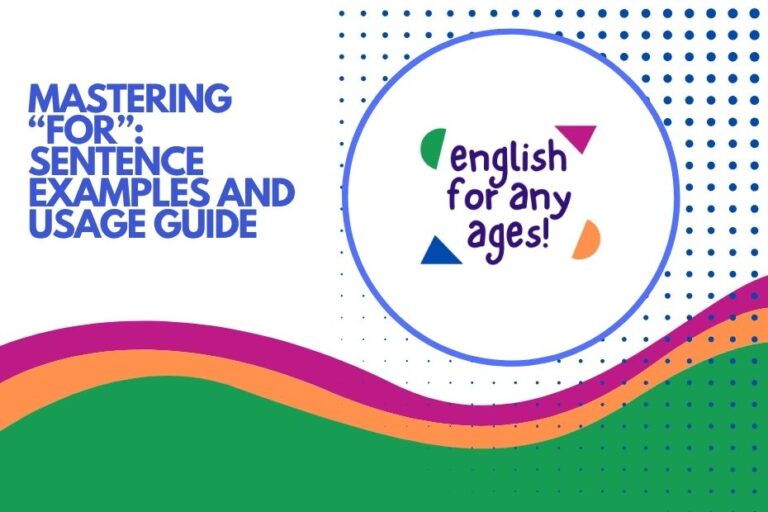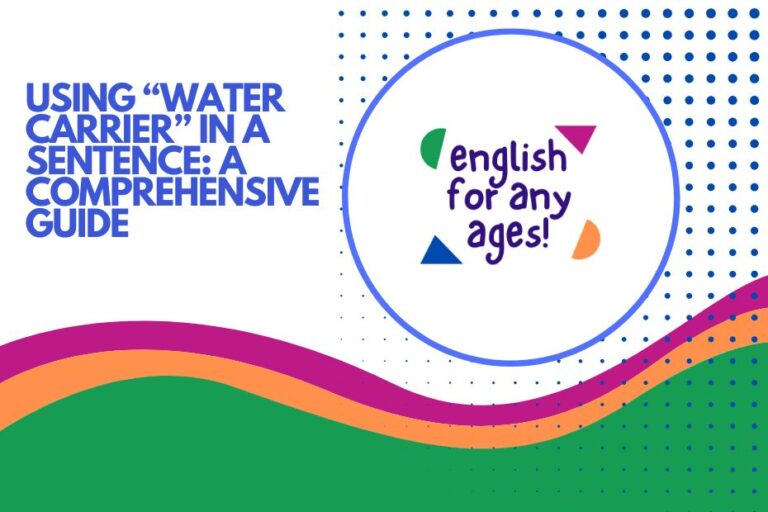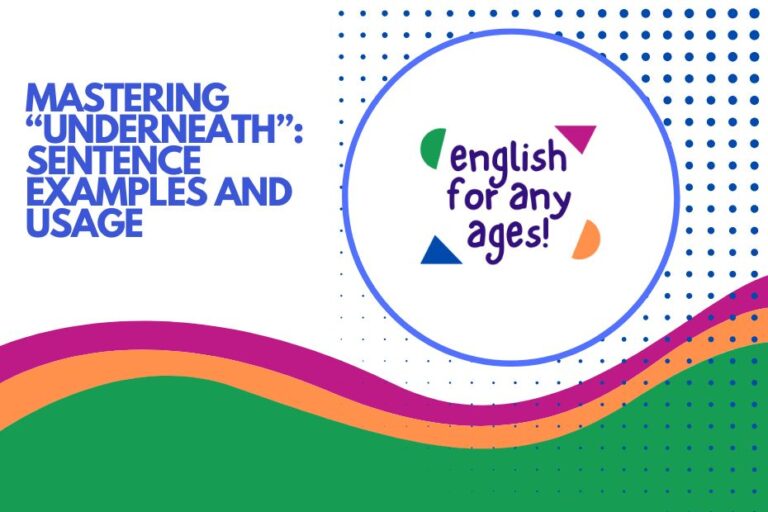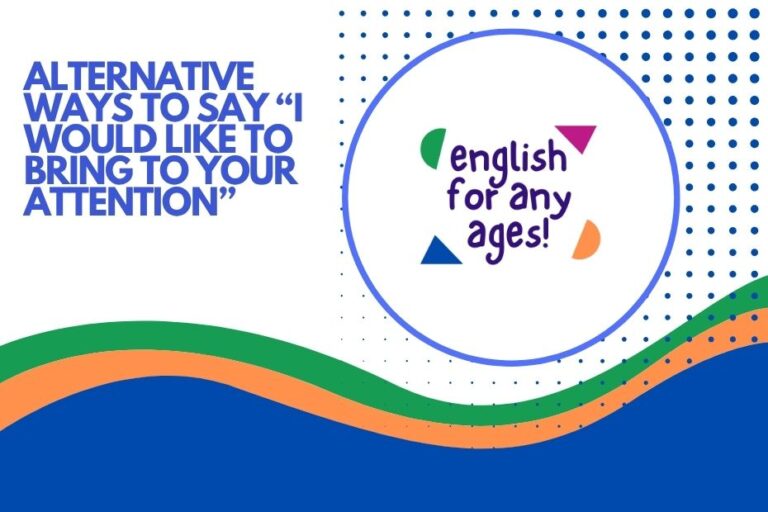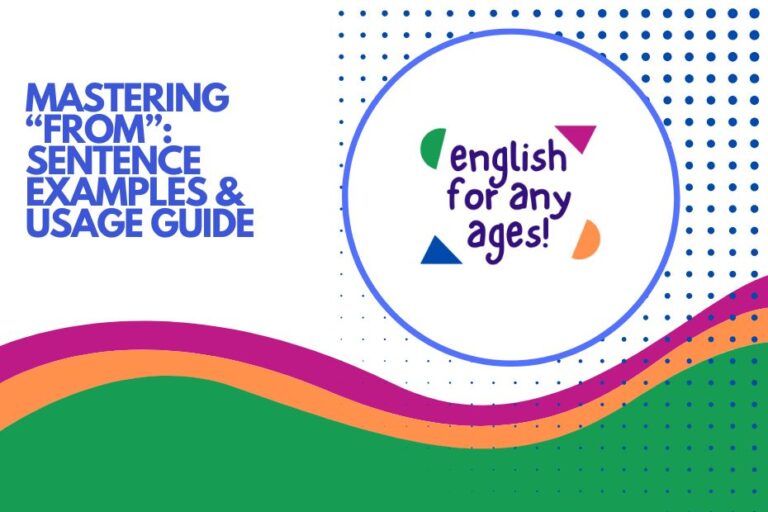Lets Learn All About Sentences – A Complete Guide
What is a Sentence?
Definition
A sentence is a group of words that express a complete thought. It starts with a capital letter and ends with a punctuation mark, like a period (.), question mark (?), or exclamation mark (!).
Components of a Sentence
Every sentence has three main parts:
- Subject: The person, place, or thing we are talking about. Example: “The dog”.
- Predicate: Tells what the subject does. Example: “is barking.”
- Object: The thing receiving the action. Example: “at the cat.”
Types of Sentences by Structure
Sentences can have different structures:
1. Simple Sentence
A simple sentence has one subject and one predicate.
- “She runs.”
- “The sun shines.”
2. Compound Sentence
A compound sentence has two simple sentences joined by words like “and,” “but,” or “or.”
- “She runs, and he swims.”
- “I wanted to play, but it started raining.”
3. Complex Sentence
A complex sentence has one main idea and one extra idea starting with words like “because,” “although,” or “when.”
- “Although she was tired, she kept running.”
- “Because it was raining, we stayed inside.”
4. Compound-Complex Sentence
This combines a compound and a complex sentence.
- “She runs, and he swims because they love exercise.”
- “I wanted to play, but because it was raining, I stayed inside.”
Types of Sentences by Function
1. Declarative Sentences
Declarative sentences make a statement and end with a period. They tell us something or give information.
- The sun is shining.
(This sentence gives information about the sun.)
- I love reading books.
(This tells us about a personal preference.)
2. Interrogative Sentences
Interrogative sentences ask a question and end with a question mark.
- What is your name?
(This sentence asks for information.)
- Are you coming to the party?
(This is asking about someone’s plans.)
3. Imperative Sentences
Imperative sentences give commands, requests, or instructions. They usually end with a period but can also end with an exclamation mark for strong commands.
- Close the door.
(This is a command.)
- Please pass the salt.
(This is a polite request.)
4. Exclamatory Sentences
Exclamatory sentences express strong feelings or emotions and end with an exclamation mark.
- Wow, this is amazing!
(This sentence shows excitement.)
- What a beautiful day!
(This expresses admiration.)
Clauses and Phrases
What are Clauses?
A clause is a group of words that has a subject and a predicate. Clauses can be independent or dependent.
- Independent Clause: She sang a song.
(This sentence can stand alone and expresses a complete thought.)
- Dependent Clause: Although she sang a song.
(This sentence cannot stand alone and needs more information to complete its meaning.)
- Independent Clause: They are playing outside.
(This expresses a complete thought.)
- Dependent Clause: If they play outside.
(This needs more information to be complete.)
What are Phrases?
A phrase is a group of words that works together but does not have a subject and a predicate. Phrases add detail to sentences.
- Noun Phrase: A beautiful house.
(This acts as the subject or object in a sentence.)
- Verb Phrase: Is reading a book.
(This shows an action or state.)
- Prepositional Phrase: Under the big tree.
(This gives more information about location.)
- Noun Phrase: The little boy.
(This can be the subject of a sentence.)
- Verb Phrase: Has been working hard.
(This indicates an action.)
- Prepositional Phrase: In the morning.
(This tells us when something happens.)
Difference Between Clauses and Phrases
Clauses have both a subject and a predicate, while phrases do not. A clause can sometimes stand alone, but a phrase cannot.
- Clause: The cat is sleeping.
(This has a subject, “the cat,” and a predicate, “is sleeping.”)
- Phrase: On the couch.
(This adds detail but does not have a subject or predicate.)
How to Build a Sentence
Steps to Build a Sentence
A sentence is a group of words that expresses a complete thought. Follow these simple steps to build one:
- Start with a capital letter: Always begin your sentence with a capital letter.
Example: She loves cake. - Use the correct word order: Follow the Subject + Verb + Object structure.
Example: The dog chased the ball. - End with punctuation: Add a period, question mark, or exclamation mark to end the sentence.
Example: He is playing outside.
Practice Exercise
Rearrange the words below to make a correct sentence:
- Words: is big elephant The.
- Correct Sentence: The elephant is big.
Explanation: Rearrange the words to form the correct Subject + Verb + Object order.
More Examples with Explanations
- Birds fly in the sky.
Explanation: Subject = Birds, Verb = fly, Object = in the sky.
- The baby is crying.
Explanation: Subject = The baby, Verb = is crying.
- I love ice cream.
Explanation: Subject = I, Verb = love, Object = ice cream.
- They are watching a game.
Explanation: Subject = They, Verb = are watching, Object = a game.
- We play football every Sunday.
Explanation: Subject = We, Verb = play, Object = football.
- The cat sleeps on the mat.
Explanation: Subject = The cat, Verb = sleeps, Object = on the mat.
- She is reading a book.
Explanation: Subject = She, Verb = is reading, Object = a book.
- John plays the guitar beautifully.
Explanation: Subject = John, Verb = plays, Object = the guitar.
Active and Passive Sentences
Active Voice Definition
In active voice, the subject performs the action in the sentence. This structure is direct and easy to understand.
- The cat chased the mouse.
Explanation: Subject = The cat, Verb = chased, Object = the mouse.
- She wrote a letter.
Explanation: Subject = She, Verb = wrote, Object = a letter.
- They built a house.
Explanation: Subject = They, Verb = built, Object = a house.
Passive Voice Definition With Examples
In passive voice, the subject receives the action. This structure is often used when the focus is on the action rather than the doer.
- The mouse was chased by the cat.
Explanation: Object = The mouse, Verb = was chased, Doer = by the cat.
- A letter was written by her.
Explanation: Object = A letter, Verb = was written, Doer = by her.
- A house was built by them.
Explanation: Object = A house, Verb = was built, Doer = by them.
Comparing Active and Passive Voice
Let’s see the same sentence in both active and passive voices:
- Active: The chef cooked the meal.
Passive: The meal was cooked by the chef.Explanation: Active focuses on the doer (the chef), while passive focuses on the action and recipient (the meal).
- Active: The teacher praised the student.
Passive: The student was praised by the teacher.Explanation: Active emphasizes the teacher, and passive emphasizes the student.
- Active: The artist painted a portrait.
Passive: A portrait was painted by the artist.Explanation: Active highlights the artist, and passive highlights the portrait.
Sentence Patterns
Basic Sentence Patterns
Sentences follow different patterns based on their structure. Here are some common patterns:
- SVO: He drinks water.
(Subject = He, Verb = drinks, Object = water)
- SVO: She writes poems.
(Subject = She, Verb = writes, Object = poems)
- SVC: She is happy.
(Subject = She, Verb = is, Complement = happy)
- SVC: The sky looks blue.
(Subject = The sky, Verb = looks, Complement = blue)
- SV: The baby sleeps.
(Subject = The baby, Verb = sleeps)
- SV: Birds fly.
(Subject = Birds, Verb = fly)
Advanced Sentence Patterns
More complex sentence patterns add additional elements like complements and adverbials.
- SVOC: We painted the house white.
(Subject = We, Verb = painted, Object = the house, Complement = white)
- SVOC: They made her captain.
(Subject = They, Verb = made, Object = her, Complement = captain)
- SVOA: She placed the book on the table.
(Subject = She, Verb = placed, Object = the book, Adverbial = on the table)
- SVOA: He drove the car to the garage.
(Subject = He, Verb = drove, Object = the car, Adverbial = to the garage)
- SVO: The chef cooked a delicious meal.
(Subject = The chef, Verb = cooked, Object = a delicious meal)
- SVO: She reads books every night.
(Subject = She, Verb = reads, Object = books, Adverbial = every night)
Sentence Errors and Corrections
Common Sentence Errors and How to Fix Them
| Error | Why It’s an Error | Correction |
|---|---|---|
| She go to school every day. | Incorrect verb form; “go” should be “goes” for singular subject. | She goes to school every day. |
| I like pizza I eat it often. | Run-on sentence; missing punctuation or conjunction. | I like pizza. I eat it often. |
| Because I was tired. | Sentence fragment; incomplete thought. | I went to bed early because I was tired. |
| The man walked the dog in a suit. | Misplaced modifier; unclear who is wearing the suit. | The man in a suit walked the dog. |
| Me and my friend is going to the park. | Incorrect subject pronoun and verb agreement. | My friend and I are going to the park. |
| He don’t like vegetables. | Incorrect verb form; “don’t” should be “doesn’t” for singular subject. | He doesn’t like vegetables. |
| She was happy, she got a new bike. | Comma splice; needs conjunction or separate sentence. | She was happy because she got a new bike. |
| He running fast. | Missing auxiliary verb “is.” | He is running fast. |
| I have went to the store. | Incorrect past participle; “went” should be “gone.” | I have gone to the store. |
| She don’t know the answer. | Incorrect verb form; “don’t” should be “doesn’t.” | She doesn’t know the answer. |
| The book was on the table that I borrowed. | Misplaced modifier; unclear meaning. | The book that I borrowed was on the table. |
| We was late for the meeting. | Incorrect verb form; “was” should be “were.” | We were late for the meeting. |
| He eat lunch at noon. | Incorrect verb form; “eat” should be “eats” for singular subject. | He eats lunch at noon. |
| There is many reasons to be happy. | Incorrect subject-verb agreement; “is” should be “are.” | There are many reasons to be happy. |
| Me like to play soccer. | Incorrect subject pronoun; “Me” should be “I.” | I like to play soccer. |
| She has wrote a book. | Incorrect past participle; “wrote” should be “written.” | She has written a book. |
| They was waiting outside. | Incorrect verb form; “was” should be “were.” | They were waiting outside. |
| It’s its fault. | Confusion between “it’s” (it is) and “its” (possessive form). | It’s its fault. → It is its fault. |
| Every students like the teacher. | Incorrect subject-verb agreement; “students” should be “student.” | Every student likes the teacher. |
Building Better Sentences
Using Connectors
Coordinating Conjunctions: These words connect words, phrases, or clauses of equal importance.
- “I like apples and bananas.”
- “She wanted to go, but she was tired.”
- “Do you want tea or coffee?”
“And” connects two things that are equally important. It shows that you like both fruits.
“But” connects two ideas that are different or in contrast. Here, she wants to go, but she is tired.
“Or” gives two choices. It shows that you can pick either tea or coffee.
Subordinating Conjunctions: These words connect a dependent clause to an independent clause.
- “I stayed home because it was raining.”
- “He smiled although he was tired.”
- “I will go if you come.”
“Because” shows the reason for staying home—it was raining.
“Although” shows contrast. He smiled despite being tired.
“If” shows a condition. You will go only if the other person comes.
Adding Details with Modifiers
Adjectives and Adverbs: These words describe or modify other words in a sentence. Adjectives describe nouns, and adverbs describe verbs, adjectives, or other adverbs.
- “The little boy ran quickly.”
- “She is very tall.”
- “The cat sat quietly on the chair.”
“Little” is an adjective describing the boy, and “quickly” is an adverb describing how he ran.
“Very” is an adverb describing how tall she is. It emphasizes her height.
“Quietly” is an adverb telling us how the cat sat.
Sentence Variety
Combining Short Sentences: You can make your writing better by combining short sentences into longer, more interesting ones.
- “I went to the store. I bought some snacks.”
- “She likes to play soccer. She plays every weekend.”
You can combine these to make one sentence: “I went to the store and bought some snacks.”
Combined: “She likes to play soccer, and she plays every weekend.”
Varying Sentence Length: Use both short and long sentences to keep the reader interested.
- “The sun set. It was beautiful.”
- “He was excited about the trip. The trip was to the mountains, where he would hike and explore new places with his friends.”
Here, the first sentence is short, and the second one is a bit longer for effect.
This sentence is long and gives more detail about the trip.
Advanced Sentence Construction
Parallel Structure
When you make a list of things, they should be in the same format. This makes the sentence sound smooth and balanced.
- “She likes singing, dancing, and painting.”
- “I enjoy reading, writing, and playing.”
- “The dog is playful, energetic, and friendly.”
All of these activities are in the same form, so the sentence sounds smooth and equal. Each verb is in its base form: singing, dancing, and painting.
Again, all three activities are presented with the same structure, making the sentence easy to follow.
These adjectives follow the same pattern, giving us a clear description of the dog.
Conditional Sentences
Conditional sentences show possible situations and their results. They often use words like “if” or “when.”
Zero Conditional (General Truths)
- “If you heat water to 100°C, it boils.”
This is always true. The condition (“If you heat water to 100°C”) and the result (“it boils”) always happen together.
First Conditional (Real Future Possibilities)
- “If I study, I will pass the test.”
This is a real possibility. If I study, I have a chance to pass the test.
Second Conditional (Unlikely or Imaginary Situations)
- “If I had a million dollars, I would travel the world.”
This is an imaginary situation. I don’t have a million dollars, so this is a dream or an unlikely situation.
Third Conditional (Past Hypothetical Situations)
- “If I had studied, I would have passed the test.”
This talks about a situation that didn’t happen in the past. I didn’t study, so I didn’t pass the test.
Inversions
Inversions happen when we change the usual order of words in a sentence. It’s often used for emphasis or style.
- “Never have I seen such beauty.”
- “Seldom do we get such clear weather.”
- “Only after the storm did we find the lost ship.”
This is a special structure where “Never” comes at the beginning for emphasis, making the sentence sound stronger and more exciting.
“Seldom” is the word that starts the sentence for emphasis. This shows that good weather doesn’t happen often.
This structure is used for emphasis. “Only after the storm” emphasizes when the event happened.
Practical Applications of Sentences
Writing Clear and Concise Sentences
To write good sentences, make sure they are clear and easy to understand. Avoid repeating words and ideas (redundancy) and confusing your reader (ambiguity).
- “The big large dog ran fast.”
- “She said that she would go to the store, but she did not go.”
- “I will come if I can.”
This sentence is redundant because “big” and “large” mean the same thing. It can be simplified to: “The large dog ran fast.”
This is unclear. It could be simplified to: “She said she would go to the store but didn’t.”
This sentence is simple and clear. It is easy to understand with no extra words.
Creative Sentence Writing
Creative sentences make writing fun and interesting. Use details and vivid words to describe things, and create conversations that feel real.
- “The purple sky was painted with stars, like tiny diamonds scattered across velvet.”
- “The boy skipped along the path, laughing as the wind tugged at his hair.”
- “We sat under the old oak tree, chatting about everything and nothing at once.”
This sentence is descriptive and paints a picture with vivid words, making it feel magical.
This gives you a clear image of the boy’s actions and how the wind affects him.
This sentence sets a peaceful scene, showing both the place and the feeling of the conversation.
Crafting Dialogue
- “Are we going to the park today?” asked Mia. “Yes, let’s go right now!” replied Ben.
- “I can’t find my shoes!” shouted Lucy. “Don’t worry, I’ll help you look,” said Anna.
This is an example of a simple conversation. It is clear and tells you what each person is saying.
This shows a problem and how the characters are solving it together.
Sentence Usage in Different Contexts
Different situations require different kinds of sentences. It’s important to choose the right type of sentence for the situation you are writing for.
Academic Writing
- “The process of photosynthesis is essential for plant life.”
- “This research shows that regular exercise improves mental health.”
In academic writing, you use clear, formal sentences that explain facts and ideas.
Here, the sentence is informative and objective, which is typical in academic writing.
Business Communication
- “Please find the report attached for your review.”
- “We would like to schedule a meeting to discuss the project details.”
In business communication, you need to be clear and polite. This sentence is both clear and professional.
This sentence is polite and formal, which is important for business communication.
Everyday Conversation
- “Can you pass me the salt, please?”
- “What are we doing this weekend?”
In everyday conversation, sentences are usually short and direct, like asking for something politely.
This is an informal, casual sentence used to start a conversation about weekend plans.
Practice and Exercises
Fill-in-the-Blanks
In this exercise, you need to complete the sentences by filling in the missing words. This helps you practice grammar and vocabulary.
- “She _____ to the store yesterday.” (went, go, goes)
- “I _____ my homework after school.” (do, did, does)
- “They _____ playing soccer every weekend.” (is, are, were)
The correct answer is “went” because it is the past tense of “go”.
The correct answer is “do” because we are talking about the present tense.
The correct answer is “are” because “they” is plural and needs the plural form “are”.
Sentence Rewriting
In this section, you will rewrite sentences in a different form. This helps you understand sentence structure and how to express ideas in different ways.
- “The dog is sleeping on the bed.”
- “I like to play football.”
- “She sings beautifully.”
Rewrite: “On the bed, the dog is sleeping.” This is a more creative way to say the same thing.
Rewrite: “Playing football is something I like.” This changes the sentence structure.
Rewrite: “Beautifully, she sings.” This version puts the adverb at the beginning for emphasis.
Sentence Expansion
In this exercise, you will add details to short sentences. This helps you practice making sentences more interesting and informative.
- “The dog ran.”
- “She smiled.”
- “He ate breakfast.”
Expanded: “The dog ran quickly across the field, wagging its tail.” Now the sentence gives more information about how and where the dog ran.
Expanded: “She smiled brightly, her eyes sparkling with joy.” This gives a clear picture of her smile.
Expanded: “He ate a big breakfast, with eggs, toast, and juice, before going to school.” Now the sentence includes more details.
Error Correction
In this exercise, you will identify and fix errors in the sentences. This helps you practice grammar and improve your writing skills.
- “She don’t like chocolate.”
- “I can plays the guitar.”
- “They was happy with the result.”
The correct sentence is: “She doesn’t like chocolate.” The word “don’t” should be changed to “doesn’t” for the third person singular.
The correct sentence is: “I can play the guitar.” After “can”, the verb should be in its base form (play).
The correct sentence is: “They were happy with the result.” The verb “was” should be changed to “were” because “they” is plural.
Lets practice how to form sentences and if you face any issues, let us know!
